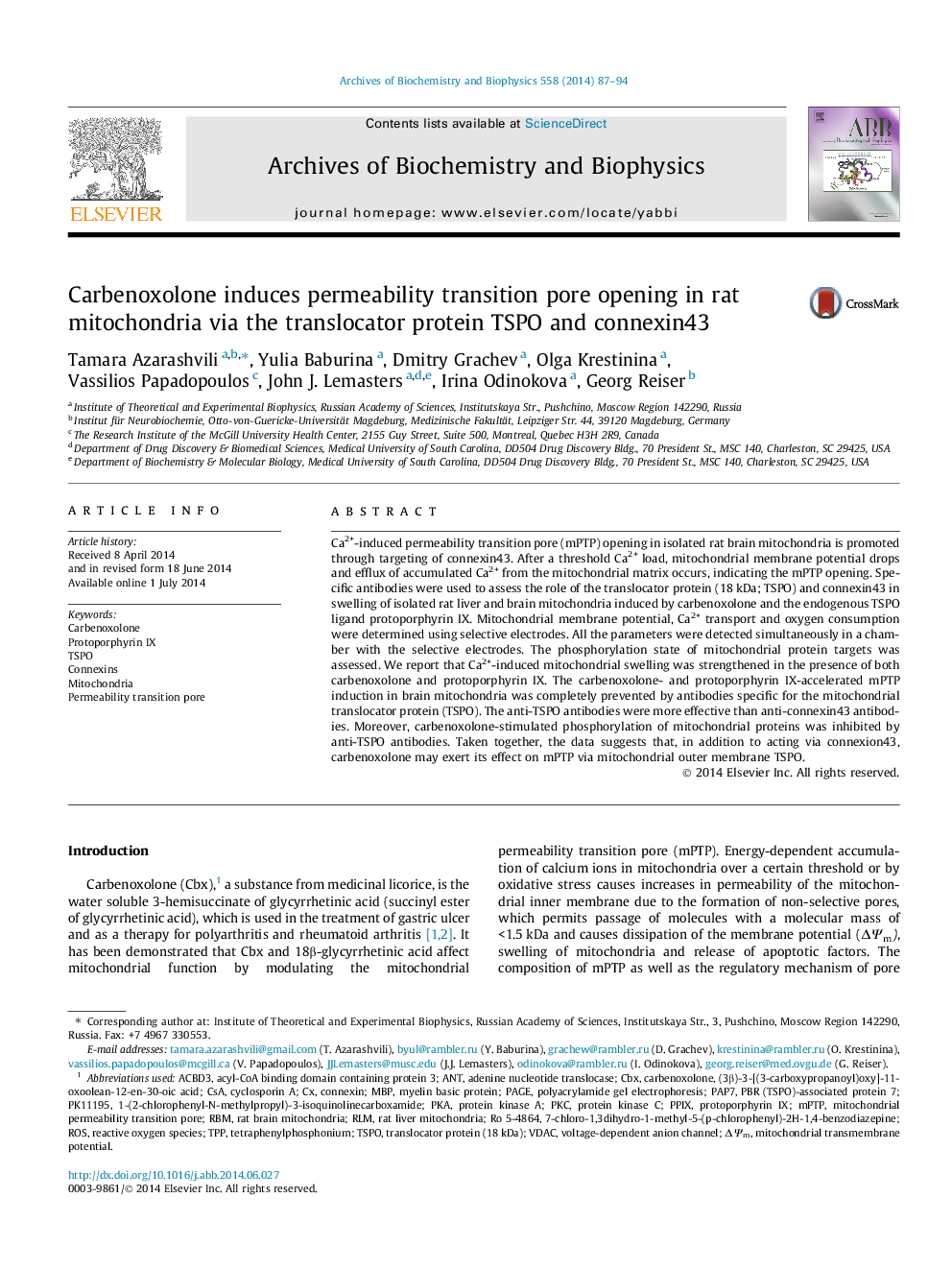| Article ID | Journal | Published Year | Pages | File Type |
|---|---|---|---|---|
| 8290200 | Archives of Biochemistry and Biophysics | 2014 | 8 Pages |
Abstract
Ca2+-induced permeability transition pore (mPTP) opening in isolated rat brain mitochondria is promoted through targeting of connexin43. After a threshold Ca2+ load, mitochondrial membrane potential drops and efflux of accumulated Ca2+ from the mitochondrial matrix occurs, indicating the mPTP opening. Specific antibodies were used to assess the role of the translocator protein (18Â kDa; TSPO) and connexin43 in swelling of isolated rat liver and brain mitochondria induced by carbenoxolone and the endogenous TSPO ligand protoporphyrin IX. Mitochondrial membrane potential, Ca2+ transport and oxygen consumption were determined using selective electrodes. All the parameters were detected simultaneously in a chamber with the selective electrodes. The phosphorylation state of mitochondrial protein targets was assessed. We report that Ca2+-induced mitochondrial swelling was strengthened in the presence of both carbenoxolone and protoporphyrin IX. The carbenoxolone- and protoporphyrin IX-accelerated mPTP induction in brain mitochondria was completely prevented by antibodies specific for the mitochondrial translocator protein (TSPO). The anti-TSPO antibodies were more effective than anti-Ñonnexin43 antibodies. Moreover, carbenoxolone-stimulated phosphorylation of mitochondrial proteins was inhibited by anti-TSPO antibodies. Taken together, the data suggests that, in addition to acting via connexion43, carbenoxolone may exert its effect on mPTP via mitochondrial outer membrane TSPO.
Related Topics
Life Sciences
Biochemistry, Genetics and Molecular Biology
Biochemistry
Authors
Tamara Azarashvili, Yulia Baburina, Dmitry Grachev, Olga Krestinina, Vassilios Papadopoulos, John J. Lemasters, Irina Odinokova, Georg Reiser,
